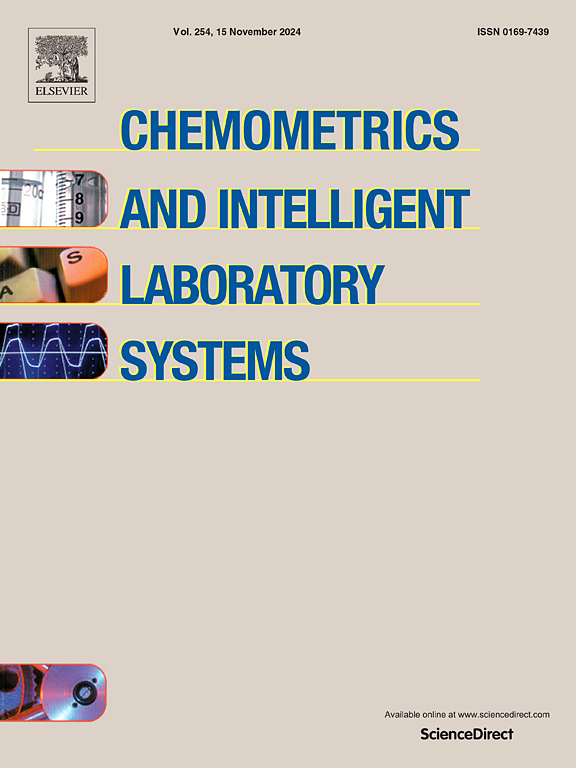利用人工智能评估药物纳米颗粒靶向癌症治疗,以评估不同部位的递送效率
IF 3.7
2区 化学
Q2 AUTOMATION & CONTROL SYSTEMS
Chemometrics and Intelligent Laboratory Systems
Pub Date : 2024-12-17
DOI:10.1016/j.chemolab.2024.105309
引用次数: 0
摘要
在肿瘤靶向治疗中,药物纳米颗粒在肿瘤部位的递送效率较差是发展该技术的主要问题。药物纳米载体的种类、形状、大小、材料。物理化学性质对输送效率起着重要的作用,这一点需要充分认识。本研究提出了一种机器学习方法来预测纳米颗粒通过各种器官的靶向癌症治疗的递送效率。重点介绍了三种高级回归模型:高斯过程回归(GPR)、额外树回归(ET)和局部多项式回归(LPR)。将这些模型整合到复杂生物医学数据集的分析中,该数据集包括534条纳米颗粒特性记录及其在肿瘤、心脏、肝脏、脾脏、肺和肾脏等器官中的分布,证明了它们在提高化学和生物过程预测准确性方面的潜力。GPR是一种非参数概率模型,在处理具有复杂非线性关系的小型复杂数据集时具有鲁棒性,可以提供精确的不确定性量化。ET回归是一种集成学习方法,由于其独特的构造随机分割的多个未修剪决策树的方法,它在高维数据中具有抗过拟合的弹性。LPR之所以被纳入,是因为它能够捕捉数据中的局部趋势,在不假设全局参数形式的情况下提供细微的预测。对数据集进行了严格的预处理,包括使用链接方程(MICE)方法进行缺失数据的输入,使用子空间离群检测(SOD)方法进行离群检测,以及使用条件互信息(CMI)方法进行特征选择。采用Z-score归一化对特征进行标准化,使其符合GPR的高斯假设,提高模型的整体性能。使用鲸鱼优化算法(WOA)对模型进行优化,以最大限度地提高预测精度,GPR和ET模型在预测生物分布结果方面比基线模型有显着提高。本文章由计算机程序翻译,如有差异,请以英文原文为准。
Utilization of artificial intelligence for evaluation of targeted cancer therapy via drug nanoparticles to estimate delivery efficiency to various sites
Poor delivery efficiency of drug nanoparticles to tumor sites in targeted cancer therapy is a major issue towards developing this technique. The type of drug nanocarrier, its shape, size, materials. and physicochemical properties play important roles on the delivery efficiency which should be well understood. This study presents a machine learning approach to predict the delivery efficiency of nanoparticles across various organs for targeted cancer therapy via nanoparticles. The focus was made on three advanced regression models: Gaussian Process Regression (GPR), Extra Trees (ET) regression, and Local Polynomial Regression (LPR). The integration of these models into the analysis of a complex biomedical dataset—comprising 534 records of nanoparticle properties and their distribution across organs such as the tumor, heart, liver, spleen, lung, and kidney—demonstrates their potential in enhancing predictive accuracy in chemical and biological processes. GPR, a non-parametric probabilistic model, was selected for its robustness in handling small, intricate datasets with complex nonlinear relationships, offering precise uncertainty quantification. ET regression, an ensemble learning method, was chosen for its resilience against overfitting in high-dimensional data, thanks to its unique approach of constructing multiple unpruned decision trees with randomized splits. LPR was included for its ability to capture local trends in data, providing nuanced predictions without assuming a global parametric form. The dataset underwent rigorous preprocessing, including missing data imputation using the Multivariate Imputation by Chained Equations (MICE) method, outlier detection through Subspace Outlier Detection (SOD), and feature selection using Conditional Mutual Information (CMI). Z-score normalization was applied to standardize the features, aligning them with the Gaussian assumptions of GPR and improving the overall performance of the models. The models were optimized using the Whale Optimization Algorithm (WOA) to maximize predictive accuracy, with GPR and ET models showing significant improvements over baseline models in predicting the biodistribution outcomes.
求助全文
通过发布文献求助,成功后即可免费获取论文全文。
去求助
来源期刊
CiteScore
7.50
自引率
7.70%
发文量
169
审稿时长
3.4 months
期刊介绍:
Chemometrics and Intelligent Laboratory Systems publishes original research papers, short communications, reviews, tutorials and Original Software Publications reporting on development of novel statistical, mathematical, or computer techniques in Chemistry and related disciplines.
Chemometrics is the chemical discipline that uses mathematical and statistical methods to design or select optimal procedures and experiments, and to provide maximum chemical information by analysing chemical data.
The journal deals with the following topics:
1) Development of new statistical, mathematical and chemometrical methods for Chemistry and related fields (Environmental Chemistry, Biochemistry, Toxicology, System Biology, -Omics, etc.)
2) Novel applications of chemometrics to all branches of Chemistry and related fields (typical domains of interest are: process data analysis, experimental design, data mining, signal processing, supervised modelling, decision making, robust statistics, mixture analysis, multivariate calibration etc.) Routine applications of established chemometrical techniques will not be considered.
3) Development of new software that provides novel tools or truly advances the use of chemometrical methods.
4) Well characterized data sets to test performance for the new methods and software.
The journal complies with International Committee of Medical Journal Editors'' Uniform requirements for manuscripts.

 求助内容:
求助内容: 应助结果提醒方式:
应助结果提醒方式:


